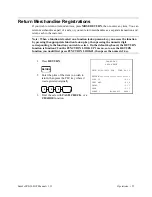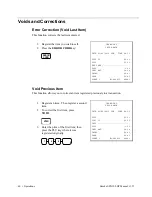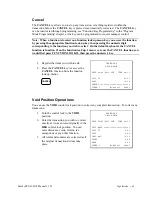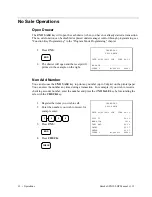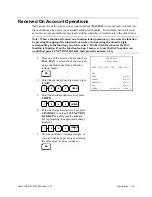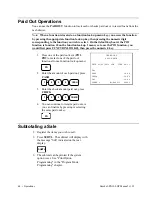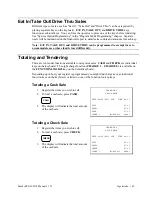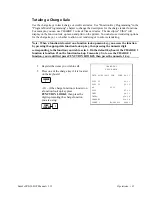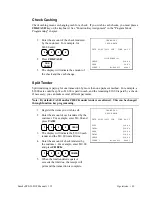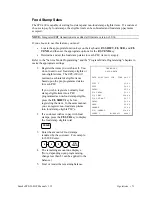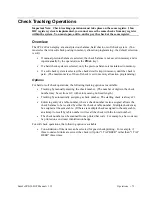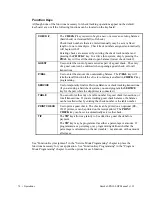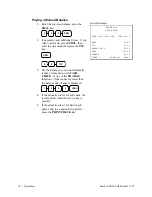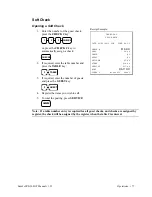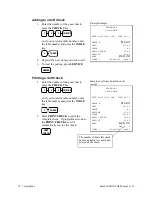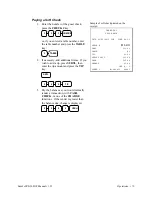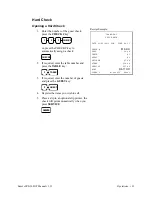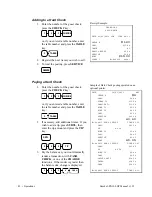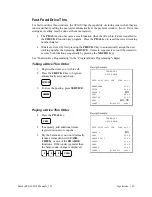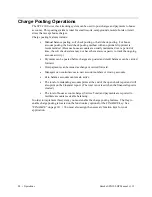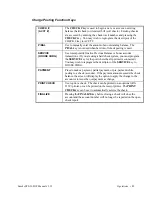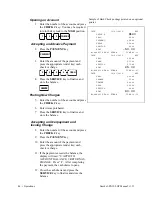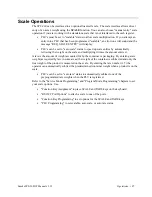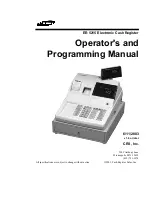
Sam4s SPS-300 OP Manual v1.35
Operations • 73
Check Tracking Operations
Important Note: Check tracking operations must take place on the same register. If an
IRC register system is implemented, you cannot access the same checks from any register
within the system. You must open, add to, and/or pay the check at the same register.
Overview
The
SPS-300
can employ a manual previous balance, hard check, or soft check system. (You
must select hard or soft check posting in memory allocation programming - the default selection
is soft.)
•
If manual previous balance is selected, the check balance is not saved in memory and is
input manually by the operator (use the
PBAL
key).
•
If a hard check system is selected, only the previous balance is maintained in memory.
•
If a soft check system is selected, the check detail is kept in memory until the check is
paid. (The maximum size of the soft check is set in memory allocation programming.)
Options
For hard or soft check operations, the following tracking options are available:
•
Tracking by manually entering the check number. (The number of digits in the check
number may be set from 0-9, with zero meaning no fixed length.)
•
Tracking by automatically assigning a check number. The starting check is always #1.
•
Enforcing entry of a table number, where a check number is also assigned, allows the
check balance to be recalled by either the check or table number. Multiple checks may
be assigned at the same table. (If there are multiple checks assigned to the same table,
an attempt to recall by table number will recall the check with the lowest number.)
•
The check number can be scanned from a printed bar code. For example, a bar code can
be printed on a customer identification badge.
For soft check operations, the following option is available:
•
Consolidation of like items can be selected for guest check printing. For example, if
three rounds of drinks are served, the check will print "3 TAP BEER" rather than "1 TAP
BEER" three times.

